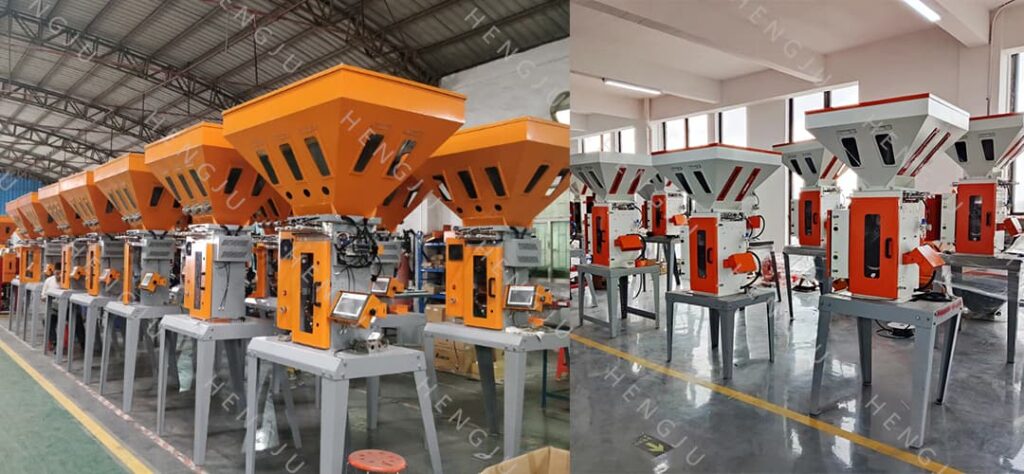Plastic gravimetric blender are specialized equipment used in the plastics industry to accurately blend different materials or additives in precise ratios. These blenders are commonly used in plastic processing operations such as injection molding, extrusion, and blow molding.
The functionality of plastic gravimetric blender revolves around their ability to measure and control the weight or mass of individual materials being blended. This ensures accurate and consistent blending of materials, resulting in the desired material ratios and properties in the final product.

Here’s a step-by-step overview of how plastic gravimetric blender typically function:
1.Material Selection: The operator selects the materials to be blended and enters the desired ratios or recipes into the blender’s control system. This can be done through a user interface or control panel.
2.Material Loading: The individual materials or additives are loaded into separate hoppers or containers attached to the blender. Each hopper usually has its own feeding mechanism to control the material flow.
3.Weighing: The blender employ precise weighing mechanisms, such as load cells or scales, to measure the weight of each material. These load cells are typically located beneath each hopper or container and can accurately measure the weight of the materials in real-time.
4.Blending Calculation: The blender’s control system continuously monitors the weight of each material being fed into the blend. Based on the desired ratios entered by the operator, the control system calculates the required weight of each material to achieve the desired blend.
5.Material Dispensing: The blender use controlled feeding mechanisms to dispense the materials into a mixing chamber or a common feeding channel. The feeding mechanisms, such as augers or gravity gates, are regulated by the control system to deliver the correct amount of each material.
6.Mixing: Once the materials are dispensed into the mixing chamber, they are typically combined using mechanical mixing elements, such as rotating paddles or screws, to ensure thorough blending.
7.Verification and Adjustments: During the blending process, the control system continues to monitor the weight of the materials in the blend. If there are any deviations from the desired ratios, the control system can make necessary adjustments to the feeding mechanisms to maintain accuracy.
8.End Result: The blended material is discharged from the blender and can be further processed, such as through extrusion or injection molding, to create the final plastic product.
The precise control and accuracy offered by plastic gravimetric blender help ensure consistent material blending, minimizing variations in the final product’s quality and properties. This is especially important in industries where strict adherence to material ratios is crucial for product performance and consistency.


